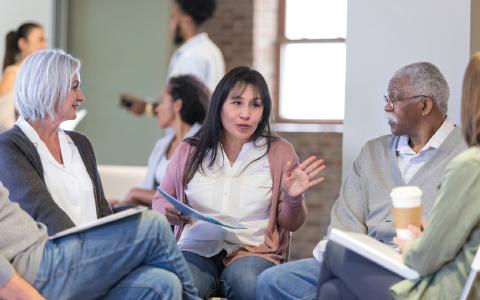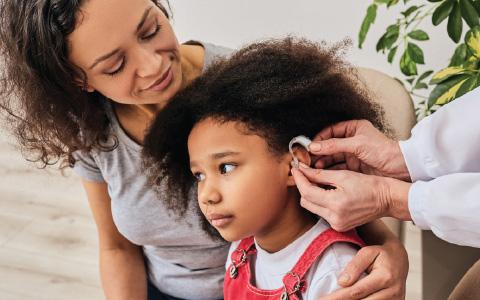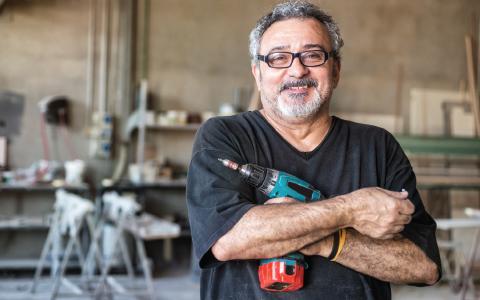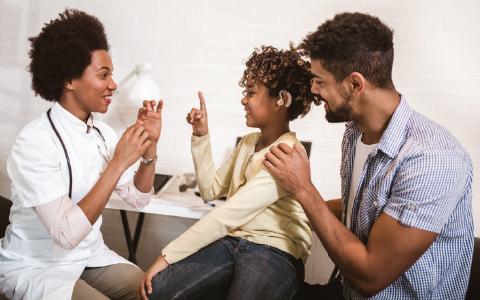
Executive Summary
Strengthening Our Equity Muscle to Advance Impact: Strategy Guides in Childhood and Youth Success, Economic Mobility, and Health
Strengthening Our Equity Muscle to Advance Impact: Strategy Guides in Childhood and Youth Success, Economic Mobility, and Health (“Strategy Guides”) are designed to support United Ways in driving equitable, structural and sustainable community change. They build on community impact strategy guides initially shared in 2016 and complement the United Way Worldwide Equity Framework.
As the United Way network seeks to more explicitly address racial inequities, advancing specific goals, strategies, and outcomes in education, economic mobility, and health, all areas with persistent inequities rooted in historical policies and practices, is paramount to making fundamental change.
The Strategy Guides detail why United Way is placing an emphasis on addressing disparities rooted in racism. Data shows that racism in the United States has been the most pervasive form of discrimination which has resulted in significant rates of poverty, unemployment or underemployment, a lack of educational opportunities, and health disparities within Black Indigenous People of Color (BIPOC) communities.
United Way’s 2028 U.S. Goals remain the same and provide a foundation for suggested racial equity goals for each impact area. Using this structure for the areas of Childhood and Youth Success, Economic Mobility, and Access to Health, local United Ways can integrate and deepen equity into their own impact efforts. Included in the Strategy Guides and summarized below are strategies and approaches that can be customized by local United Ways to maximize the impact and potential for achieving success towards more residents living good lives. Each impact area outlined below follows a similar format enabling readers to shift the frame, understand the issues, and explicitly advance equity efforts.
- Childhood and Youth Success
-
United Way has set a goal that 95 percent of students graduate from high school prepared for postsecondary education and entry-level careers by 2028. To make progress on this universal goal, it is essential to close high school and college access and completion gaps for BIPOC students.
Shift the Frame...A critical starting point for United Ways hoping to make lasting educational change is to shift the focus from individual experiences to the role of structures, institutions, policies, and practices in contributing to current educational gaps and disparities. This includes the lasting impact of racist, discriminatory policies, and practices in housing, lending, “separate but equal” public education, and employment, all of which have limited opportunities across the board for upward mobility in people of color. This shift can help create different conversations that balance an individual perspective (i.e. why specific children are not performing well) with an institutional lens (i.e. the role of inadequate school funding policies that do not equalize resources between wealthy and poor school systems as a contributing factor in individual student performance). Shifting the frame can help deepen engagement, create shared understanding among key community stakeholders, and foster the implementation of strategies and actions that can improve outcomes for individual children and youth, while also changing overall, underline conditions for BIPOC students.
Understand the Issues...
Research and lived experiences of students and their families document that students of color, especially those who reside in under-resourced communities, on average, have different and unequal access to educational resources and opportunities in comparison to their white and Asian counterparts. This includes access to early childhood programs, high-quality K-12 schools, rigorous curricula, enrichment activities, informal networks, and additional supports (e.g. tutoring). As a result of historical and current institutional and implicit biases within the educational system, BIPOC students are more likely to experience poor educational outcomes, including grade retention, school suspension, or expulsion, dropout, and lower rates of post-secondary attainment.
Advance explicit equity efforts to close educational gaps...To address these issues, and take significant steps toward the 2028 U.S. Goal, United Ways can advance the following specific goals and strategies to create more equitable educational outcomes:
- Close school readiness gaps by ensuring that BIPOC children are prepared for kindergarten. A priority strategy United Ways can employ to achieve this goal is to increase access to high-quality early childhood experiences for BIPOC children.
- Close high school graduation gaps and prepare BIPOC students for postsecondary education. Critical strategies to accomplish this goal include increasing BIPOC student access to high-quality, high-performing schools, and ensuring that they can access wrap-around school and community based supports as they progress through K-12.
- Close attainment gaps by ensuring that Black, Indigenous, and students of Color attain postsecondary education and skills (i.e. technical certifications, 2-4 year degrees) that support employability, retention, and career advancement. Critical strategies to accomplish this goal include partnering with K-12 and higher education institutions to improve access, persistence and attainment for BIPOC students, and ensuring they have quality supports and services to keep them on the path to college graduation.
For additional information, refer to the complete Childhood and Youth Success Strategy Guide
- Close school readiness gaps by ensuring that BIPOC children are prepared for kindergarten. A priority strategy United Ways can employ to achieve this goal is to increase access to high-quality early childhood experiences for BIPOC children.
- Economic Mobility
-
United Way aims to ensure that five million people get better paying jobs as a means to improve their economic mobility by 2028. By identifying and eliminating disparities in education, employment, housing, and access to financial resources, local United Way partners can implement tools provided in this section to make progress on the 2028 U.S. Goal.
Shift the Frame…
Ensuring opportunity for all requires we adopt a racial equity lens to our economic mobility work, in recognition of the corrosive relationship of systemic racism to upward mobility on the economic ladder. The ability of Americans to improve themselves and their families’ economic condition is highly correlated to race and the patterns of discrimination that constrain opportunities and limit choices for some while creating privilege for others. The net worth of the average white household in the United States is 10 times that of the average Black family. Well documented public and private discrimination in housing and lending has contributed to the significant gap in wealth between whites and people of color. This shift counters the notion of “pulling oneself up by the boot-straps,” highlighting historic patterns of structural and institutional inequities. Unequal access to high-quality education and employment opportunities in high-growth sectors, combined with over representation in low-wage jobs with little to no room for advancement, remain chronic barriers to economic mobility for BIPOC individuals.
Understand the Issues…
There are several compounding inequities that have collectively contributed to the racial wealth gap. College degree attainment is a key strategy for upward mobility, however access to quality K-12 education and the rising cost of a post-secondary education with graduation remains significant barriers to entry. Additionally, many jobs pay less than a living wage and bring into focus the growing population making up the working poor. Despite the growing numbers of individuals who identify as BIPOC and hold advanced degrees, equal pay for equal work remains an elusive goal. Entrepreneurship is a proven accelerator in creating economic security and wealth generation. However, it is well documented that entrepreneurs who identify as BIPOC struggle to gain access to startup capital and are among the most vulnerable during economic downturns. Homeownership has long been regarded a foundation of the American dream and a critical pathway to economic mobility. The lasting legacy of redlining and ongoing devaluation of properties located within communities of color helps explain why many communities of color continue to experience concentrations of generational poverty.
Advance Explicit Equity Efforts to Close the Racial Wealth Gap…
To address these issues, and take significant steps toward the 2028 U.S. Goal, United Ways can advance the following specific goals and strategies to create more equitable economic mobility:
- Ensure BIPOC youth and adults have the education, skills, networks, and opportunities to obtain and retain good jobs with pathways for advancement. Core strategies to accomplish this goal include programmatic implementation of initiatives that allow BIPOC students to complete advanced degrees, certifications, and other technical training opportunities that create pathways for high paying jobs with opportunity for growth in high demand fields.
- Support BIPOC individuals and communities in growing their assets and net worth, which will close racial wealth gaps.
- Ensure BIPOC communities have access to capital, network, resources and opportunities to develop and sustain successful businesses. Respective strategies include access to resources that promote entrepreneurship inclusive of capital, exposure, and educational opportunities that center business practices to start and scale operations.
For additional information, refer to the Economic Mobility Strategy Guide
- Ensure BIPOC youth and adults have the education, skills, networks, and opportunities to obtain and retain good jobs with pathways for advancement. Core strategies to accomplish this goal include programmatic implementation of initiatives that allow BIPOC students to complete advanced degrees, certifications, and other technical training opportunities that create pathways for high paying jobs with opportunity for growth in high demand fields.
- Access to Health
-
By 2028, the United Way hopes to ensure that 90 percent of people from marginalized communities are healthier. This can be accomplished through an equity goal of reducing racial and ethnic health disparities that close gaps in morbidity and mortality rates. United Way partners can help to ensure that low-income and BIPOC communities have access to the physical, mental, social, and economic resources needed to be healthy by implementing the strategies listed in this section.
Shift the Frame…
When offering pathways to accomplishing the 2028 U.S. Goal focused on Access to Health, it is important to recognize that one’s health is not just a reflection of individual behavior but is also influenced by access to quality care, physical environment, and socioeconomic factors. Among the key factors that play a significant role in the health of individuals and communities are economic stability, neighborhood location and housing, access to education, availability of healthy foods and access to healthcare systems. These drivers of health (also known as the social determinants of health) have been defined by the Centers for Disease Control as the circumstances in which people are born, live, work, and age, as well as the healthcare system. Structural racism shapes where and how people live, and what opportunities they have, and therefore is a direct contributor to inequity because it limits the ability of BIPOC communities to access the resources and services needed to obtain good health. Efforts to advance health equity should address the detrimental role that racism and discrimination have played in shaping the health outcomes of under-resourced communities and recognize that unequal systems and structures have created significant roadblocks and challenges to achieving optimal health for all.
Understand the Issues…
When comparing communities with similar poverty rates, there are numerous structural and logistical barriers for BIPOC communities to access quality resources that contribute to positive health outcomes. Most recently, the COVID-19 pandemic highlighted healthcare inequities among people and communities of color due to disparities in access to stable housing, safe transportation, remote working opportunities, and quality healthcare. According to research from the Kaiser Family Foundation, COVID-19 cases among Black and Hispanic Medicare beneficiaries were 1.6 times higher than the rate observed among white beneficiaries, and COVID-19 cases among American Indian/Alaska Native beneficiaries were 1.7 times higher than among white beneficiaries.
Advance Explicit Equity Efforts to Close Health Disparities...
To address these issues and take significant steps toward the 2028 U.S. Goal, United Ways can advance the following specific goals and strategies to create more equitable health outcomes.
- Address place-based health disparities by ensuring that BIPOC individuals and communities have an opportunity to be healthy regardless of where they live. A core strategy to achieve this goal is to work with community partners and residents to strengthen and build communities by addressing the social determinants of health.
- Reduce disparities in maternal and infant mortality for BIPOC mothers and babies. Key strategies to achieve this goal include improving access to and quality of prenatal and postpartum care, addressing social needs, and raising awareness of healthy infant development.
- Increase access to affordable, comprehensive health insurance and quality health care for populations facing gaps in health disparities. Critical strategies to achieve this goal are to promote public or private health insurance enrollment, remove barriers to access public benefits and health resources, and support health services in under-resourced and BIPOC communities.
For additional information, refer to the Access to Health Strategy Guide
- Address place-based health disparities by ensuring that BIPOC individuals and communities have an opportunity to be healthy regardless of where they live. A core strategy to achieve this goal is to work with community partners and residents to strengthen and build communities by addressing the social determinants of health.
- Closing
-
The Equity Strategy Guides are designed to move from theory to action. When it comes to tackling macro issues at a micro (local) level, it is important that United Ways harness the strength of the community by centering resident voice within existing work, and exploring partnerships with diverse, trusted community leaders. Paired with the value add of United Way, actions such as bridge building and expanding corporate relationships can be leveraged to catalyze equitable change in education, economic mobility, and health. Four foundational steps towards integrating equity to produce more equitable outcomes include:
- Collection and use of disaggregated data to inform decision making (refer to data sections within each of the Impact areas).
- Ensure everyone within the organization understands their role in driving equity. This includes moving beyond programmatic approaches by setting explicit goals that provide systemic solutions and tracking progress over time (refer to strategies and approaches by functional areas in the appendix).
- Ensure authentic community mobilization and engagement by empowering community residents to co-create solutions that also reflect a holistic view of the community’s history. At times this might require establishing new partnerships with leaders or organizations that already hold the trust of the community (refer back to the Equity Framework).
- Engage new donors that have not previously supported United Way while also maintaining existing relationships.When making investments including racial equity in evaluation criteria is another tactic to be considered (Refer to Leveraging Equitable Impact in Childhood and Youth Success, Economic Mobility, and Access to Health to Engage New and Sustain Existing Donors).
- We invite you and your colleagues to take the next step towards being more intentional in making the implicit explicit by: integrating an equity lens to frame issues and avoid perpetuating harmful narratives; expanding your understanding of the root causes of issues; taking specific actions to advance equity efforts; and leading with humility, including engaging new partners.
We look forward to continuing to listen and learn, enabling us to offer resources and solutions that are informed by a comprehensive understanding of place-based strategies that drive social change in pursuit of achieving the 2028 impact goals.
- Collection and use of disaggregated data to inform decision making (refer to data sections within each of the Impact areas).














